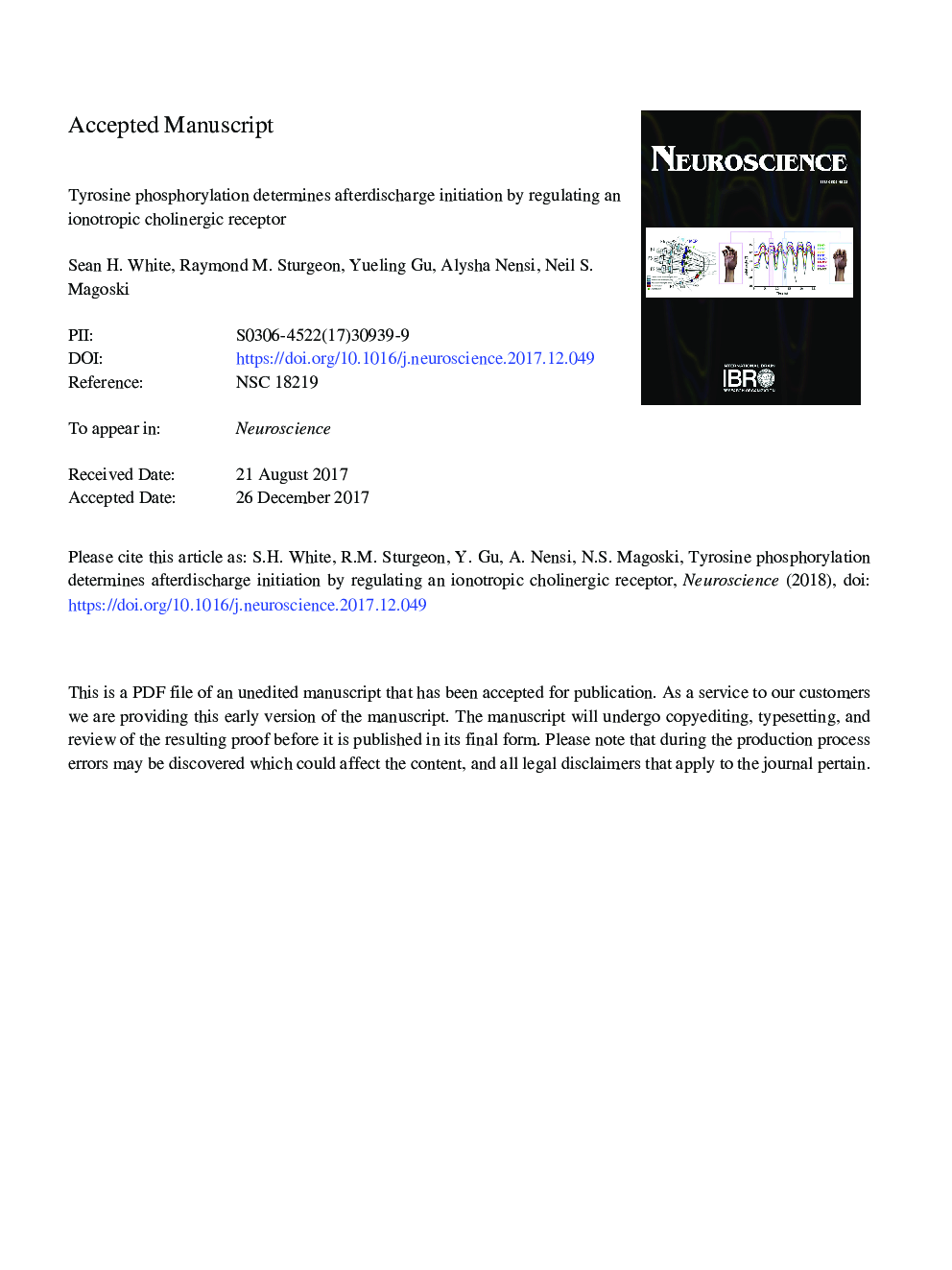| کد مقاله | کد نشریه | سال انتشار | مقاله انگلیسی | نسخه تمام متن |
|---|---|---|---|---|
| 8841003 | 1614704 | 2018 | 46 صفحه PDF | دانلود رایگان |
عنوان انگلیسی مقاله ISI
Tyrosine Phosphorylation Determines Afterdischarge Initiation by Regulating an Ionotropic Cholinergic Receptor
ترجمه فارسی عنوان
فسفوریلاسیون تریروزین پس از تخلیه را با تنظیم یک گیرنده ی کولینرژیک یوناتروپیک تعیین می کند
دانلود مقاله + سفارش ترجمه
دانلود مقاله ISI انگلیسی
رایگان برای ایرانیان
کلمات کلیدی
GTPPP1HEPESphorbol 12-myristate 13-acetateEGTAPKCDMSO - DMSOPMA - LDC هاATP - آدنوزین تری فسفات یا ATPACh - آهBAPTA - بیایپیتیایTetraethylammonium - تترا اتیل آمونیومTyrosine - تیروزینDimethyl sulfoxide - دیمتیل سولفواکسیدPhosphatase - فسفاتازTyrosine phosphorylation - فسفوریلاسیون تروفوزینProtein kinase C - پروتئین کیناز سیTEA - چایAcetylcholine chloride - کلرید استیل کولینCalcium - کلسیمNicotinic receptor - گیرنده نیکوتین
موضوعات مرتبط
علوم زیستی و بیوفناوری
علم عصب شناسی
علوم اعصاب (عمومی)
چکیده انگلیسی
Changes to neuronal activity often involve a rapid and precise transition from low to high excitability. In the marine snail, Aplysia, the bag cell neurons control reproduction by undergoing an afterdischarge, which begins with synaptic input releasing acetylcholine to open an ionotropic cholinergic receptor. Gating of this receptor causes depolarization and a shift from silence to continuous action potential firing, leading to the neuroendocrine secretion of egg-laying hormone and ovulation. At the onset of the afterdischarge, there is a rise in intracellular Ca2+, followed by both protein kinase C (PKC) activation and tyrosine dephosphorylation. To determine whether these signals influence the acetylcholine ionotropic receptor, we examined the bag cell neuron cholinergic response both in culture and isolated clusters using whole-cell and/or sharp-electrode electrophysiology. The acetylcholine-induced current was not altered by increasing intracellular Ca2+ via voltage-gated Ca2+ channels, clamping intracellular Ca2+ with exogenous Ca2+ buffers, or activating PKC with phorbol esters. However, lowering phosphotyrosine levels by inhibiting tyrosine kinases both reduced the cholinergic current and prevented acetylcholine from triggering action potentials or afterdischarge-like bursts. In other systems, acetylcholine receptors are often modulated by multiple signals, but bag cell neurons appear to be more restrictive in this regard. Prior work finds that, as the afterdischarge proceeds, tyrosine dephosphorylation leads to biophysical alterations that promote persistent firing. Because this firing is subsequent to the cholinergic input, inhibiting the acetylcholine receptor may represent a means of properly orchestrating synaptically induced changes in excitability.
ناشر
Database: Elsevier - ScienceDirect (ساینس دایرکت)
Journal: Neuroscience - Volume 372, 21 February 2018, Pages 273-288
Journal: Neuroscience - Volume 372, 21 February 2018, Pages 273-288
نویسندگان
Sean H. White, Raymond M. Sturgeon, Yueling Gu, Alysha Nensi, Neil S. Magoski,
